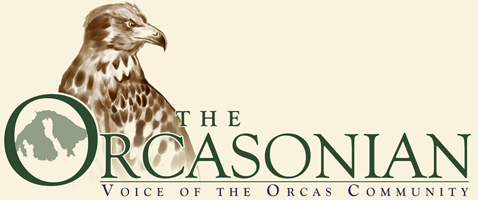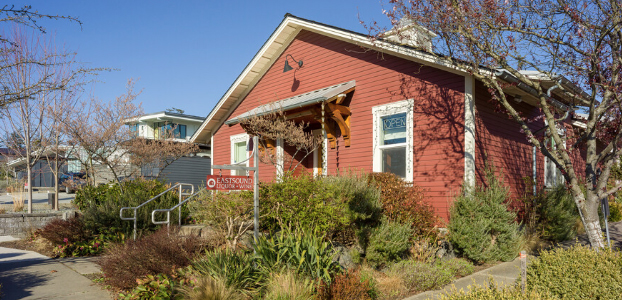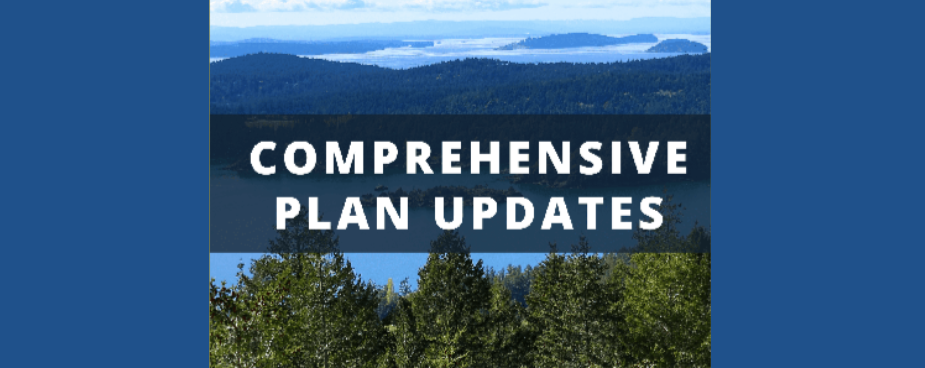— from Hugh M. Grant, LICSW —
The magic of Orcas Island wins over most visitors almost immediately. The island’s beauty is such that even a short list of its appealing features can sound like the exaggerated praise of advertisements, but it’s nevertheless true that lovely mountains, tranquil lakes, miles of trails, stunning sea views, rolling pastures, fascinating people, charming hamlets, and the welcoming town of Eastsound all happily exist here.
Our abundance of natural resources and a strong community ethos go a long way to make living on Orcas an unrivaled pleasure. And yet it’s also true that, in our small way, we have most of the big problems that exist on the mainland. This is especially true when it comes to income disparity. A recently study published by the Economic Policy Institute examined the ratio of top 1% incomes to bottom 99% incomes for all U.S. counties using data for 2013 (https://www.epi.org/multimedia/unequal-states-of-america). San Juan County had the 10th highest top to bottom ratio, meaning that we have serious disparity by national standards, with 1% of the population here making 68.7 times more than the other 99% (an average of $3,072,877 compared to an average of $44,728). Yes, things could be a lot worse: Teton County, Wyoming is the most unequal county in the United States, with 233 times more money being earned by the few than is earned by the many (an average of $28,163,78 compared to an average of $120,884). But things could also be better.
Bettering the global income disparity problem will be a long and incremental process. Meanwhile, however, there are ways that homegrown agencies and the county government are working to make things better, sooner than later. Income disparity is but one national problem that is prominent in this almost-but-not-quite idyllic place. At the local level our community has found ways to help people who are having difficulty with a myriad of other more specific and situational problems. For example, the Orcas Community Resource Center (aka “the Resource Center,” formerly Orcas Family Connections) is open every weekday to help anyone manage and overcome a wide array of psychosocial stressors. Although getting assistance from a social services agency can often involve paperwork and patience, there is a particular area that the Resource Center is frequently able to offer help simply and quickly, thanks to the mental health services offered by San Juan County’s Community Wellness Program (CWP). This is good news, because psychological suffering is a normal part of the human experience that knows no geographical boundaries. Our untreated problems stay with us, no matter who we are or where we live. If we move here, they follow us. If we ignore them, they can get worse. New problems arise as we encounter life’s challenges. Solace and remoteness can turn into isolation. Sometimes we need help. For those who can afford it, there are enough mental health professionals in the area to meet the demand. And, through the CWP, those with lower incomes can also access affordable mental health care.
A bit of background: in 2005, recognizing the need for additional mental health and chemical dependency programs, the state legislature authorized counties to implement a 1/10 of 1% sales tax to support new or expanded chemical dependency or mental health treatment services, and for the operation of new or expanded therapeutic court programs. In 2008, the San Juan County Council passed an ordinance to impose the tax. The CWP was thus born as a means to help folks get sorely needed low-cost short-term counseling support through the resource centers on Lopez, San Juan, and Orcas Islands. The Orcas Community Resource Center administers this program in Eastsound. The enrollment process is simple. Little other information rather than the desire to talk to a therapist is required, and confidentiality is assured.
While the CWP allows people to get short-term mental health services quickly, the Resource Center can simultaneously work to help the same client access long-term health care through Apple Health (Washington State’s Medicaid program) or to look more closely to see if one of the options offered through the Washington Health Benefit Exchange might be a viable option (www.wahbexchange.org). Since the CWP can pay for up to 12 sessions per client, this creates a helpful buffer during which time it is hoped that clients who need ongoing assistance can obtain insurance and secure an in-network therapist who can see them for more sessions after the CWP benefit has been used.
Our county’s Community Wellness Program and the work of the Orcas Community Resource Center are examples of the ways that we’re making our gorgeous island even more beautiful. While the many commendable ecological nonprofits work to preserve Orcas’ natural grandeur, the Resource Center and other helping agencies seek to stabilize and improve the standard of living for the island’s human inhabitants. The Resource Center’s Executive Director, Erin O’Dell, notes that CWP counseling services “have allowed dozens of individuals and families to get mental health services that they would not have been able to access otherwise.” Although she’s not privy to the content of therapy sessions, she delights in witnessing improvements over time. Rocky marriages have been restored to health, individuals have gained insight into directions and goals, moms and dads have gained parenting skills, people in the throes of grief have regained equilibrium, and caregivers have found the strength and support they need to keep their compassion flowing. If you need help, please do give the Resource Center a call.
And if you can offer help, the Resource Center needs volunteers and funds to expand services. Drop by the office at 423 Prune Alley, or call 360-376-3184 to find out more.
**If you are reading theOrcasonian for free, thank your fellow islanders. If you would like to support theOrcasonian CLICK HERE to set your modestly-priced, voluntary subscription. Otherwise, no worries; we’re happy to share with you.**








The Resource Center is a most wonderful organization! I personally know of several families who were helped tremendously at dire times in their lives!
It is run by people who authentically care not only for the people they so humbly serve, but they also take good care that our donated dollars are put to the best use possible.
With all of the phone scamming going on from many bogus requests, isn’t it wonderful to be able to donate our dollars to local causes knowing it is put to the best use possible, by the most loving volunteers for the folks on this island who need it the most?
With the holiday season approaching, I for one am so grateful for all we have here on Orcas. The Resource Center is a gift “that keeps on giving” as long as we continue to support it. Please do! Every dollar helps!
Maggie